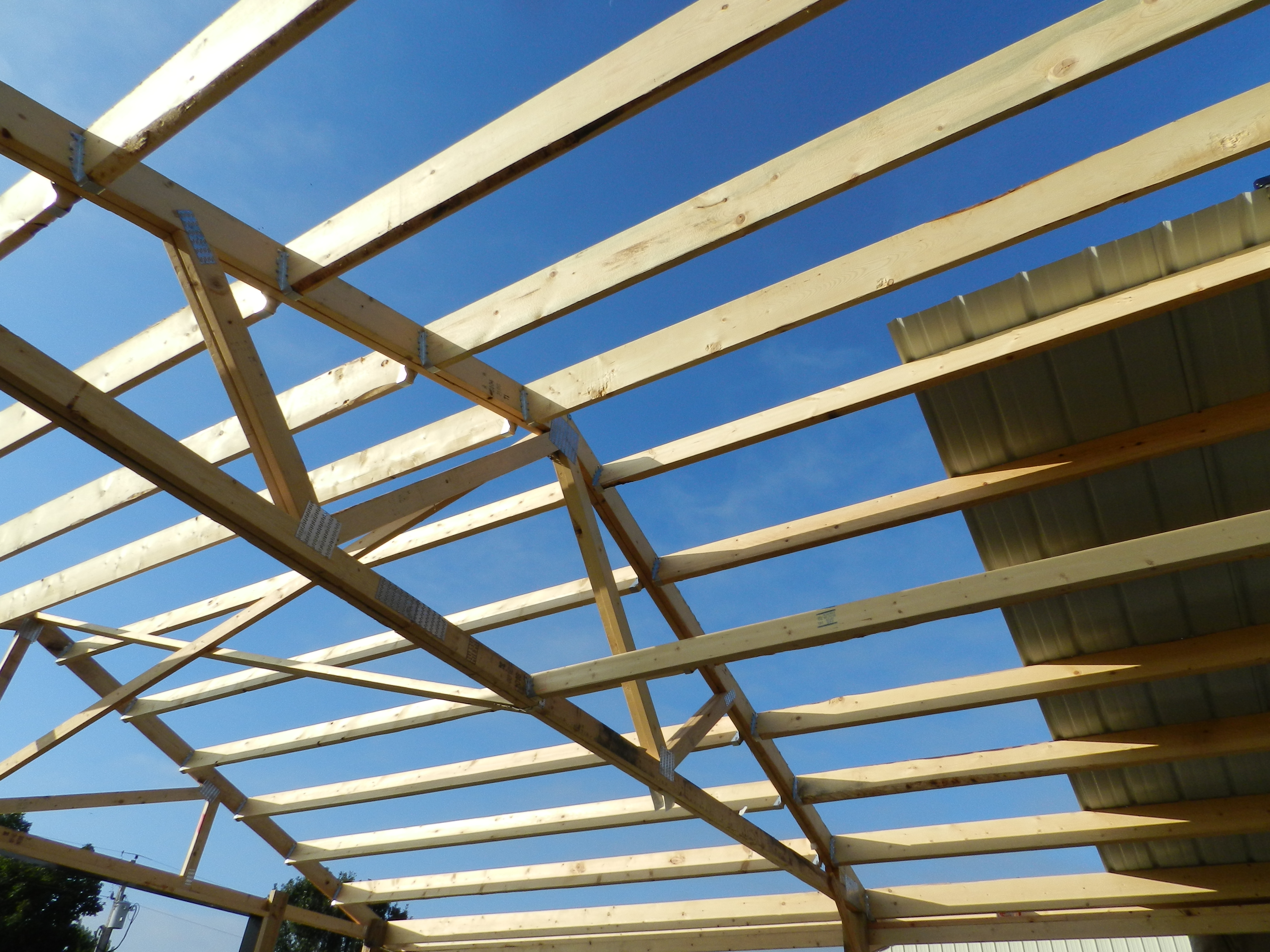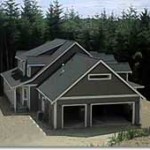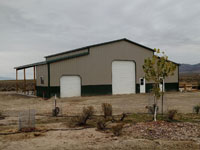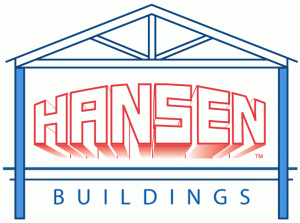You Can’t Build It Here
 When I first began selling pole barn kits in Oregon, back in 1980, they were almost universally no permit required farm buildings. As our service area expanded into states such as California and Nevada, engineering was required in most instances, however there was never a concern about a pole building not being approved for use in any jurisdiction.
When I first began selling pole barn kits in Oregon, back in 1980, they were almost universally no permit required farm buildings. As our service area expanded into states such as California and Nevada, engineering was required in most instances, however there was never a concern about a pole building not being approved for use in any jurisdiction.
Now there were some ‘tough’ Building Departments. Most providers and builders refused to even quote permitted pole buildings within Multnomah County, Oregon or King County, Washington – just because they involved engineering and had plans examiners who were actually engineers themselves.
As our Pacific Northwest pole building industry evolved and expanded, we knew we had clients who were bootlegging our buildings into homes, but it wasn’t until I built a shouse (shop/house) for myself in rural Spokane County, Washington nearly 30 years ago, where I actually participated in a post frame building specifically designed for residential use all along.
In recent years, there has been a literal explosion of barndominiums across our country – many of these being post frame homes. And why not? Post frame offers so many benefits over limitations of what is considered to be a more traditional structural system – stick (or stud wall) framed.
Perhaps stick built construction’s biggest advantage is builders and tradespeople are very comfortable working in and around stick framing. All registered architects and most building inspectors are very familiar with stick framing. 2018’s International Residential Code (IRC) provides a prescriptive ‘cook book’ to follow for adequate structural assembly, within certain limitations. These include, but are not limited to, no story height of greater than 11 feet 7 inches (R301.3.1), no hurricane prone areas with a design wind speed of 130 mph or greater located south of Virginia, or 140 mph elsewhere (R301.2(5)B), and no ground snow loads over 70 psf (R301.2.3).
IRC802.10.2.1 further limits truss spans to a maximum of 36 feet and building lengths to 60 feet (measured perpendicular to truss span). Trussed roof slopes must be at least 3:12 and no greater than 12:12.
Wood is a very forgiving building material and, even when miscut, replacement material is usually only a short drive away. America’s home building industry has built traditional, wood stick framed homes, on site for decades.
Many builders, architects, carpenters and other subcontractors prefer to work on stick built homes as compared to alternative building systems, as it is what they are familiar with. Because traditionally framed houses are so popular, dimensional lumber and stick built framers are readily available.
Another advantage of stick built homes is they allow for a great level of design freedom. One can design a home with various ceiling heights, angles and curves, niches and other details. Stick framing is one way to achieve those unique details at a fairly affordable cost.
Despite its popularity, stick framing does have some drawbacks. Because stick built homes are assembled outside, over several weeks, framing lumber is subject to outside moisture. If lumber gets too wet, it can shrink and warp as it dries and cause cracks in the attached drywall. This shrinking and warping can also make it difficult to properly insulate. To decrease risks of potential moisture problems, exteriors are covered with an appropriate and well-sealed Weather Resistant Barrier and lumber should be properly dried before drywall and insulation are installed.
Another drawback of a stick built home is it usually takes several weeks to complete framing. Total amount of time it will take will obviously depend on the size and complexity of house plans and size, experience and availability of any particular framing crew.
A framing crew must precisely cut, assemble and erect framing components sometimes in adverse weather conditions. Working around adverse weather conditions is another challenge with stick framing.
Come back in two days for the conclusion in You Can’t Build it Here Part II.

 Very few residential (1 and 2-family) structures in this region use CM components (e.g. roof or floor trusses or wall panels). Many use Engineered Wood Products (EWP). These are typically designed (for gravity loading) and supplied through a distributor. The process is similar to a performance specification leading to deferred submittal, but most often without any design engineer input at the design stage nor any review of the submittals. For gravity loading, this process usually works well. A couple of things are usually missing. One is any consideration to lateral loading paths in the building and the other is a design professional in responsible charge to confirm the members, load paths, and connections all are consistent with the rest of the structure. So, the final result is a structure with a few well-engineered EWP products (for gravity loading), and some portions of the structure (almost) in line with IRC, but the remaining is just whatever the particular framer deemed adequate (similar to what he is used to seeing).
Very few residential (1 and 2-family) structures in this region use CM components (e.g. roof or floor trusses or wall panels). Many use Engineered Wood Products (EWP). These are typically designed (for gravity loading) and supplied through a distributor. The process is similar to a performance specification leading to deferred submittal, but most often without any design engineer input at the design stage nor any review of the submittals. For gravity loading, this process usually works well. A couple of things are usually missing. One is any consideration to lateral loading paths in the building and the other is a design professional in responsible charge to confirm the members, load paths, and connections all are consistent with the rest of the structure. So, the final result is a structure with a few well-engineered EWP products (for gravity loading), and some portions of the structure (almost) in line with IRC, but the remaining is just whatever the particular framer deemed adequate (similar to what he is used to seeing). Geography and business size are not a consideration in nominations; Build News only wants the very best of the best, no matter whether they are a sole trader in a small town or a multinational corporation with offices in the world’s largest cities. It is not just architects who are eligible for the program. Everyone involved in the industry can be a possible participant, from architectural technologists, products suppliers, software developers and more. Only excellence is important.
Geography and business size are not a consideration in nominations; Build News only wants the very best of the best, no matter whether they are a sole trader in a small town or a multinational corporation with offices in the world’s largest cities. It is not just architects who are eligible for the program. Everyone involved in the industry can be a possible participant, from architectural technologists, products suppliers, software developers and more. Only excellence is important. Shaping the built environment is a tough challenge for anyone, and the architects, designers and innovators across the architecture market have an important role to play in transforming the way we see the world. BUILD News has been spurred on by the success of last years’ awards, and again is looking to recognize only the best this incredible and expansive industry has to offer.
Shaping the built environment is a tough challenge for anyone, and the architects, designers and innovators across the architecture market have an important role to play in transforming the way we see the world. BUILD News has been spurred on by the success of last years’ awards, and again is looking to recognize only the best this incredible and expansive industry has to offer.




